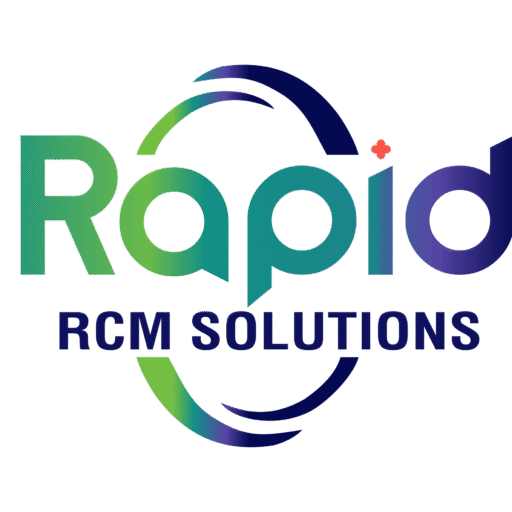Patient trust is the foundation of healthcare, and protecting sensitive information isn’t just a legal requirement; it’s part of caring for your patients. An unnoticed oversight in HIPAA compliance can result in a heavy fine, information loss, and the loss of credibility that no practice can afford.
In recent years, as more patient information flows through systems and cyber threats become increasingly advanced, the definition of being compliant has changed, and it now means more than merely checking boxes. It is about the routine inclusion of privacy and security in day-to-day practice. That’s where a clear, practical HIPAA compliance checklist comes in; something you and your team can actually use, not just file away in a binder.
Below is the latest HIPAA compliance checklist designed for clinics, hospitals, and private practices. Each point is written to be easy to follow and directly applicable to daily workflows.
1. Know and Apply the HIPAA Privacy and Security Rules
HIPAA is based on the Privacy Rule and Security Rule. Collectively, they specify who may access PHI and how to ensure that ePHI is secured.
Privacy Rule: It specifies patient rights, including who can see their medical records and in what circumstances. The staff must know what information is to be released and what requires written permission.
Security Rule: Focuses on safeguarding ePHI. Practices should use strong passwords, multi-factor authentication, and encrypted systems to prevent unauthorized access.
When staff understand these rules, compliance becomes second nature instead of a checklist item.
2. Conduct Risk Assessments Regularly
Risk analysis is not conducted only during annual audits. They are supposed to be incorporated into your regular practice whenever implementing new technologies, staff roles, and systems. A proper risk assessment means:
- Mapping out all places where PHI is stored or accessed.
- Assessing potential threats to the data from phishing emails, lost or stolen devices, or insider errors.
- Assessing existing protection measures and identifying lapses.
- Documenting results and updating action plans.
It is like a health check-up of your data security. Consistent evaluation will assist you in identifying the issues before they become breaches.
3. Strengthen Administrative, Technical, and Physical Safeguards
HIPAA mandates data protection on many levels, and all of them contribute to the safety of patient information.
Administrative safeguards: Restrict access to PHI to only staff who genuinely require it. To provide an example, billing personnel do not require comprehensive clinical data.
Technical safeguards: Both at rest and in transit, encrypt PHI. Use secure logins, strong authentication, and auto log-off capabilities.
Physical protections: Lock rooms and cabinets that store paper-based files or computer devices. Limit the access to server rooms and also put on surveillance in case it is needed.
A multi-layer approach means that even when one barrier fails, there are others in place to mitigate the risks.
4. Train and Retrain Your Team
Compliance starts with people. Even the most advanced security system won’t help if staff aren’t trained on HIPAA basics. Every employee should know:
- How to securely handle PHI.
- How to identify phishing or suspect activity.
- What action to take in case they suspect a breach
Training will never be a single event during onboarding. Refresher training and learning through scenarios make employees remain alert as threats change.
5. Use HIPAA-Compliant Communication Tools
Most violations occur when employees use normal communication tools such as cell phone messages or personal emails to share patient information. To remain compliant:
- Use encrypted email or secure portals when sending patient records.
- Avoid unapproved apps or messaging platforms for PHI.
- Get patient consent before sending electronic information when required.
- Verify recipient details before sharing sensitive data.
Communication tools should be built into your EHR and configured properly to ensure effective communication. It is also important to audit those communication tools.
6. Keep Documentation Up to Date
HIPAA compliance isn’t only about actions, but it’s also about proof. Every healthcare provider should maintain:
- Records of staff training and compliance programs.
- Risk assessment reports and action plans.
- Policies and procedures for handling PHI.
- Signed Business Associate Agreements (BAAs) with vendors who access patient data.
By law, most HIPAA documentation should be stored for at least six years. Having detailed records makes audits easier and demonstrates your commitment to compliance.
7. Have a Breach Response Plan
There are no foolproof systems, and a breach may still occur. The difference is in how fast and well you respond. Your breach plan must address:
- Immediate steps to contain the incident.
- Internal reporting procedures for staff.
- Notification requirements for patients and the Department of Health and Human Services (HHS).
- Documentation of the investigation and corrective measures.
The timing is important since HIPAA demands that some breaches be reported within 30 days. A clear plan prevents confusion and limits the damage to both patients and your practice.
8. Stay Current with 2025 Regulations and Technology
HIPAA requirements change with changing technology. In 2025, particular attention should be paid by the providers to:
Interoperability: There are new rule changes under which patients will now have better access to their records in the form of Fast Healthcare Interoperability Resources (FHIR). Systems need to be modified to accommodate this.
Zero Trust security frameworks: Zero Trust does not assume that systems are safe; it instead requires verification of users and devices on an ongoing basis.
AI-assisted tools: Automation tools can be used to monitor and detect threatening activity in a more timely manner.
Implementing early on the current trends not only builds compliance but also enhances patient confidence in your practice.
To Sum it Up!
Being HIPAA compliant does not need to be a challenge. The simple checklist can enable providers to incorporate it into regular practices rather than an annual scramble. It should be all about the protection of patients, as once their information is kept in a safe place, the level of their trust increases.
A checklist such as this is more than a compliance tool; it is also a reminder that patient privacy and security are central to healthcare. By keeping your focus steady and making small adjustments on a daily basis, it is possible to stay compliant with HIPAA in 2025 in a meaningful manner.
FAQs
Q1: What physical and technical safeguards are essential for protecting PHI?
Use encryption for data in storage and transit, control access by role, enable multi-factor authentication, lock physical files, and securely dispose of old records.
Q2: What are common HIPAA compliance mistakes to avoid in 2025?
The most common traps are skipped risk assessments, old policies, inadequate staff training, missing BAAs, ineffective email security, and a lack of a breach response plan.
Q3: What are the penalties for non-compliance with HIPAA in 2025?
Fines are between $137 and 2.1 million per category of violations per year, along with the potential legal action and loss of patient trust.
Q4: How can smaller clinics without big IT budgets stay HIPAA compliant?
Pay more attention to the training of the staff, make sure the policies are constantly upgraded, and utilize cloud applications that are affordable and HIPAA compliant, embracing automated monitoring wherever possible.





